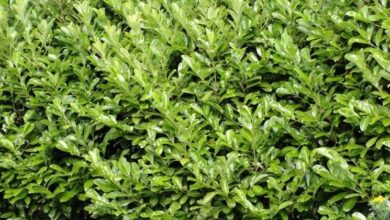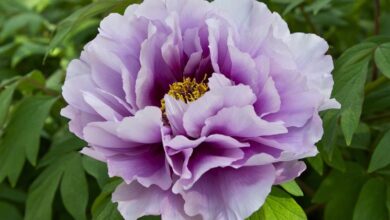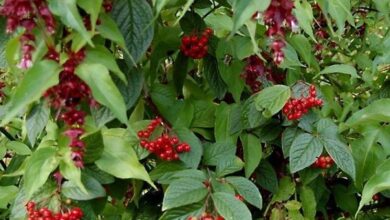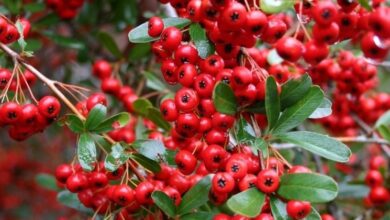Cassia obovata

Today we are going to talk about a plant that we can recognize by various scientific names. The traditional name that has been had until now is that of Cassia obovata. However, scientists have changed the scientific name to Senna Italica. Either way, both names are accepted. You could say that the common names are san and henna. It is a plant that has been known since ancient times and has been used for its multiple properties to care for our hair. With this plant you can make a powder with its green leaves for hair treatment.
Do you want to know what properties and benefits Cassia obovata has and how to use it? We tell you everything.
Main features

This plant has a structure similar to keratin that is used to strengthen hair. The cuticle of this plant allows it to naturally associate with each hair and thus takes care of it from external agents. Although it has a green color as a result of spraying the leaves, it does not color the hair.
The main use that is given is to condition the hair and, above all, for those who have more damaged or very dry hair . With the use of Cassia obovata you can have shinier hair, with a softer and stronger texture. When we use this plant to strengthen our hair, it works in the following way: it covers the hair strands as if it were enamel. In this way, you can smooth the cuticle. If you have more damaged hair or you want to improve hair health, this plant is an excellent option.
Cassia obovata benefits

So that you can better know what are the benefits that this plant will give us in the hair, we have collected the main advantages and their explanation. First of all, it helps us to have a pH balanced scalp. Normally, if we have oilier or drier hair from the roots, it is because we do not have very good nutrition. It can also be due to genetic aspects (there are those who eat wonderfully and are very healthy and still have oily hair). With the use of Cassia obovata you can regulate this pH to a neutral state.
If you have any pathology such as peeling, psoriasis or dermatitis, it is able to treat it and reduce its effects in a short time. It has astringent and antiseptic properties, so it allows you to repair the most damaged cuticle and prevents you from getting dandruff. We all know how ugly dandruff looks on beautiful hair. Well with this plant you will not have any more problems with it.
On the other hand, in the aesthetic aspect, we also win with respect to the tips. The san is able to protect, repair and nourish the hair to build it again. It does not penetrate the stem, but covers the entire outer cuticle with a protective layer. There are people who have problems with the porosity of their hair and the ends break off. This diminishes the aesthetics of the hair. Typically, the factors that influence this type of scalp condition are usually the excessive use of hair dyes, the continuous heat of ironing, straightening or perms.
This happens, generally, in women who choose to treat their hair with these forms. You will rarely see a man with split ends from using the iron.
Provides health and softer hair apart from promoting volume and greater vitality. For people who start to lose their hair, either because of genetics or stress, it helps to reduce hair loss and look more flattering. Helps bring out the natural hair color. The natural pigments, which are inside the cuticle, reflect light according to their health. The Cassia obovata help smooth it so that the hair can shine clearly and better show their natural color.
The result of the use of this plant for hair translates into shiny, healthy hair with a much better natural color shown.
How to use it

Now we are going to explain how you should use henna so that you can benefit from all the properties mentioned in the previous section. You need to mix the powder from the leaves with water and make a paste. We will apply this paste on the hair and let it act for a couple of hours. Once the time has passed, it is convenient to wash the hair with a little shampoo that does not have any salt.
The effects that Cassia obovata has on the hair last between 2 and 3 weeks, so this action will have to be repeated from time to time. It is advisable to set a schedule so as not to forget to continue with the treatment. The idea is that the effect has to be continuous and lengthened, as much as possible, in time. If you use it just once, don’t expect all the benefits to be seen in the long run.
The amount of powder to use for the treatment will depend on the amount and length of your hair. If you have hair above your shoulders, just use 50 grams and mix it with water.
Combination with other plants

Henna can also be mixed with other plants in an appropriate ratio to obtain different natural dyes. You can get colors such as light and medium brown, shades of honey, hazelnut, copper and an endless number of shades more typical of autumn.
If you want a more intense color in your hair, it is advisable to mix Cassia obovata with Lawsonia inermis. This combination helps your hair have a much more intense color. For example, if you want a deep blonde color, you should mix 9 parts of cassia and 1 part of lawsonia. If you prefer more reddish tones, you will have to use more lawsonia. This mixture also makes the color stay more intense over time. As we have mentioned before, cassia does not usually last more than 15 days, so we must regulate the time with which we use it.
I hope these tips help you get the hair you want so much. Remember that, when taking care of your hair, it is better to use natural elements.




